#Kobayashi Shichiro
Explore tagged Tumblr posts
Text
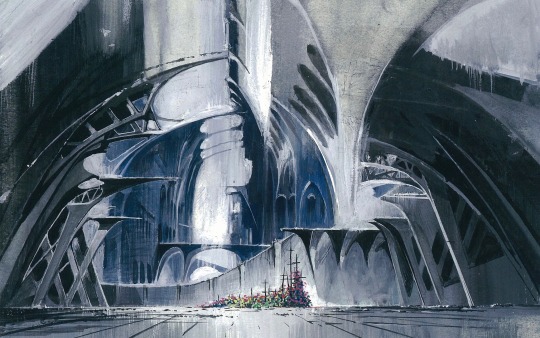


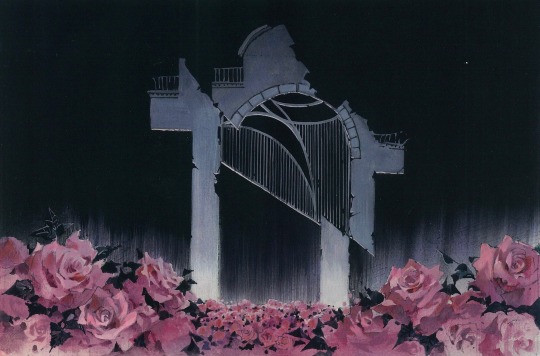
アニメ美術から学ぶ《絵の心》 Kobayashi Shichiro
5K notes
·
View notes
Text

Berserk (1997) Art by Kentaro Miura and Shichiro Kobayashi
388 notes
·
View notes
Text
Angel's Egg
Mamoru Oshii & Yoshitaka Amano (1985)
#angel's egg#mamoru oshii#yoshitaka amano#anime#80s anime#80s aesthetic#80s movies#tenshi no tamago#japanese anime#japanese animation#Shichiro Kobayashi#studio deen#aesthetic#japan aesthetic#japan#animation#天使のたまご
55 notes
·
View notes
Text
youtube
Detarame na Sekai no Melodrama - a short directed by China with music by CreepHyp (Part of the "TOHO animation: Music Films" project)
I hope rgu fans will give this a look - not only for the obvious similarities, but also to appreciate the homage to the late Shichiro Kobayashi’s aesthetic as Utena's background art director





#revolutionary girl utena#Detarame na Sekai no Melodrama#CreepHyp#Shichiro Kobayashi#music video#Youtube
15 notes
·
View notes
Text
How it feels knowing that lovingly hand painted anime backgrounds with bold brushstrokes and colours are kind of a dying art and being mostly replaced with homogenous sterile digital backrounds with mostly flat lighting or photorealism.

5 notes
·
View notes
Photo










14 notes
·
View notes
Text
learning that revolutionary girl utena and angel's egg and berserk 1997 shared the same art director (shichiro kobayashi) explained a lot to me
#also lupin III. but yeah that man had an amazing eye for striking colors and poses#no wonder i'm obsessed with these three lol
32 notes
·
View notes
Text

Berserk - Shichiro Kobayashi
58 notes
·
View notes
Text
Animation Night 163 - Yokohama Kaidishi Kikou
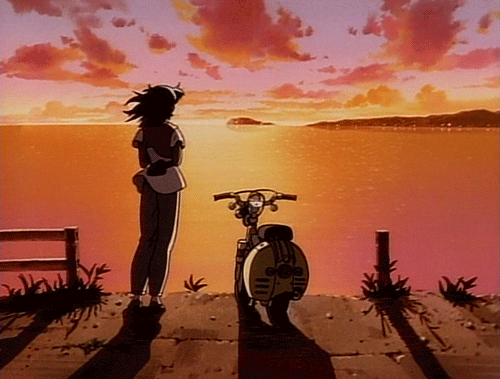
Good evening everyone! It's time at last for Animation Night. And what do we have this week... did you guess an OVA from the 1990s? That's always a safe bet with me and sure enough that's what we have tonight: ヨコハマ買い出し紀行 Yokohama Kaidishi Kikou, or in English, Yokohama Shopping Log.
I'm going to keep my writeup tonight brief, because I am fully kvin's homework on this one and I think rather than paraphrase what he wrote, lemme link the article. Here is an introduction to the series...
Nearly 3 decades after it was first published, Yokohama Kaidashi Kikou remains the poster child of mono no aware works in otaku media. Vaguely set after a catastrophe that collapsed both the planet’s ecology and human civilization as we knew it, an event that the series has no intention to explain, YKK stars android Alpha as she runs the desolate café that her long-gone master entrusted her with. Her episodic adventures are all about the appreciation of the moment, often with an emphasis on the evocative environments she casually comes across; after all, author Hitoshi Ashinano was inspired to pen this work by his fondness of taking a stroll or riding a motorcycle without a specific goal. Despite being an ode to spontaneity, YKK is also a thoroughly focused work—and the recipient of that focus is the passage of time, as well as how different beings process the ephemerality of things.

The manga is beautiful, and highly influential in establishing a certain genre of gentle post-apocalyptic works like Girl's Last Tour. But tonight we're here to see the OVAs, each of them just an hour, pulling out a selection of favourite episodes from the manga.
These two adaptations, despite coming just a few years apart, come at a point of major historical change: the first part is in the cel era, the second in digital.
For the first, we have director Takashi Anno, veteran of The Hakkenden (AN122) and magical girl anime such as Magical Emi. His characteristic direction style puts a huge emphasis on setting and atmosphere, lingering on quiet moments - something he truly ironed out in Semishigure, which returns to the protagonist of Magical Emi years after the events of the story. Which made him a perfect fit for Yokohama. kVin is full of praise for the colour design, the strength of the layouts, and especially the soundtrack.
The second OVA Quiet Country Café dir. Tomomi Mochizuki takes a radically different approach, skipping forward in the manga and introducing a boldly experimental style:
Though its color design can’t match the exquisite work of the preceding series, it makes up for it with the radically distinct art direction by the late legend Shichiro Kobayashi—best known for the likes of Utena, Gamba, Ashita no Joe 2, Castle of Cagliostro, Beautiful Dreamers, Windy Tales, and unarguably being one of the most important figures in the history of stylized Japanese animation. In contrast to the grounded scenery of the first OVA, Kobayashi’s evokes reality with stark forms, implications of movement, and downright expressionistic paintings. Compared to the gentle embrace of the first series, his work feels like it’s demanding your attention in a more proactive way.
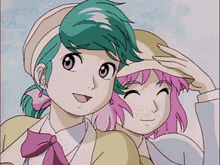
kVin describes the second episode's direction as characterised by more active and layered camerawork and a more 'involved' score - he's particularly taken with the sequence where Alpha returns to her café after the devastating storm that sets the OVA going. He compares it to Mochizuki's direction of the Ghibli film Ocean Waves.
So two approaches to the same material, two different vibes, but it sounds like both should be very strong. Tonight the plan is simple enough: we'll watch both OVAs back to back! (Apologies for the late start, as mentioned I've been having tech problems.)
AN 163 will be going live shortly at twitch.tv/canmom. Both OVAs are pretty short so we'll be watching from about 11pm to 1am UK time. love to see you there nya~
72 notes
·
View notes
Photo

study of the magnificent Shichiro Kobayashi’s work with a little ~twist haha
scene from the Nobody’s boy Remi (strongly recommend to watch!!)
#twst#twisted wonderland#twst ruggie#twisted wonderland ruggie#ruggie#ruggie bucchi#study#Illustration#nobody's boy remi#ie naki ko
178 notes
·
View notes
Text

#Animation Bijutsu - Haikei no Kiso kara Ouyou Made#Kobayashi Shichiro#its jsut a how-to book on landscapes but some of the diagrams are so cool looking
47 notes
·
View notes
Text
sorekara setting design

Here are some notes on the development of SOREKARA's style and presentation. If you couldn't already tell, SK takes a lot of inspiration from 70's/80's anime, Nobody's Boy Remi being the reference point for much of it. I've always respected Dezaki for his monumental work so I've always wanted to pay tribute to it (especially the early stuff). I don't think I was as successful as I'd like to have been, but alas! There is still more to come! So without further ado!
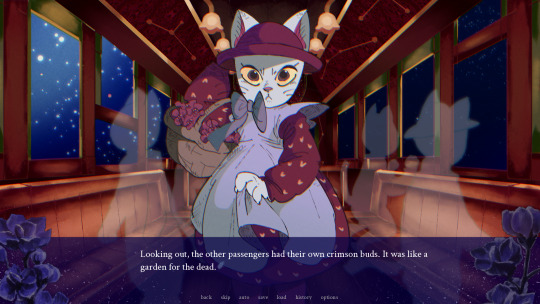
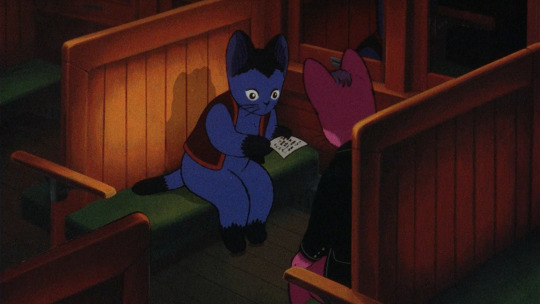
I was just talking about Dezaki , but now I shall talk about something completely different. To set the tone, I created the cat and the trolley setting first. The Girl's design should be plenty obvious (lol). But the background here I paid special attention to... I find the paints of Night on the Galactic Railroad to be very unique. They have a line less, airbrushed quality to them that blends in surprisingly well with the characters. I did some research and studied 児玉喬夫 Takao Kodama's work, as they were credited with setting design for this film as well as Genji Monogatari. Actually, if you look at Genji Monogatari's backgrounds, they have the exact same airbrushed quality! I had never done a background like this before (I am certainly not an environmental artist) but I think I did a fairly good job of it.
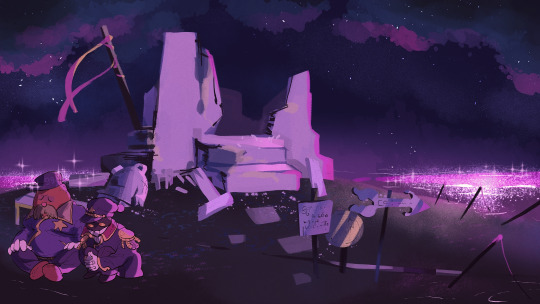

...I immediately switched gears and without thinking, went back to Dezaki works. I can't say I was very faithful at all. The night sky is easy to paint, with it's notable color spray and paint blots, but I diverged quite a bit with the watercolor textures. Shichiro Kobayashi is the artist I looked to the most, and this project made me appreciate him more than ever before. Just looking at his paints gets me emotional... The vibrant colors, the dramatic angles, you can just feel his reverence for life overflowing from the work. There really isn't anyone better. I need to study more if I'm to capture even a fraction of his skill. That being said, I did make sure to animate the backgrounds slightly with the sparkles on the water-- The reflection of light on water is my favorite to draw! Also, flowers are a very important motif (for various reasons, ohohoho). Kobayashi seemed to love drawing flowers, the paint around the edges give is a delicate look. Actually, if you look at the textbox...
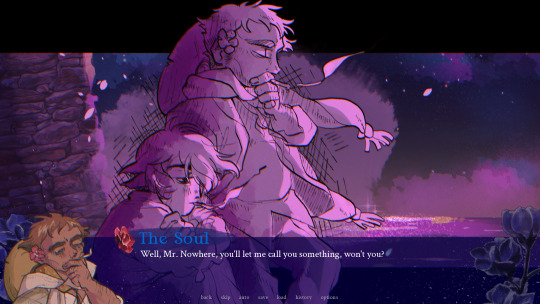
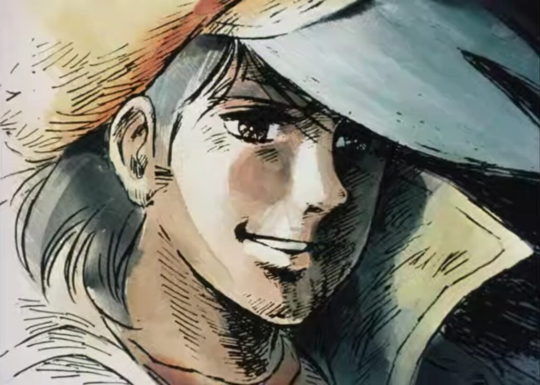
Instead of full-color CGs, I opted to use "postcard memories". This was a technique Dezaki used where he would show a detailed, scratchy-lined illustration to highlight important moments instead of fully animating them. It creates a really memorable image that draws out all of your emotions! I tried to emulate them (the more single-toned ones, that is) for the game. It was 1/3 Dezaki worship, 1/3 time-saving technique, and 1/3 excuse to draw lots of scratchy lines. I love scratchy lines. This way, I could make a lot of memorable shots that were visually interesting without overworking myself.
As another note, I looked to Akio Sugino's character art when drawing. The characters don't really look like Sugino characters, but I was emulating his shading technique with (once-again) the scratchy lines. Ah, I was in heaven. Looking at his older work, the linework is hardly ever clean-- but the rough, hand-drawn edge gives everything a tactile quality and the strong anatomy makes everyone so gorgeous. It's like an engraving come to life.

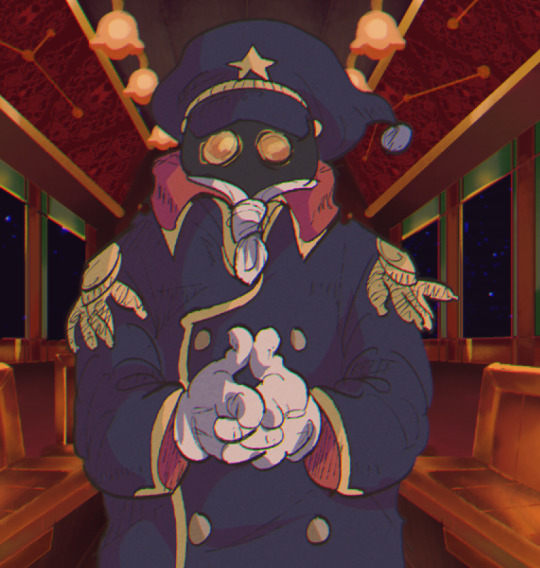
Finally, the anime effects! On the left you can see soothat before his values are adjusted (very dark, isn't he?) and on the right you can see he is in-game, values adjusted with a more appropriate "anime" look. This is because anime cells are put onto a CRT screen, so they end up looking very different. I created an auto action in CSP to adjust the color grating and line quality of every asset before popping them into the game for the chromatic aberration to take effect. The lines are slightly crunched a blurrier compared to the original. It gives it a more "physical" look. The colors are fixed up-- you'll see there is no pure black. If you look at a physical anime cell, you'll see they more often than not do not include pure black. There is usually a tint of green or red in there.
The chromatic aberration filter... I don't know how noticeable it is to the average player, but the game actually has a built-in filter that creates a slight "chroma" effect to emulate the look of frames through a crt/light. This means the red + blue + green values of the entire screen are split up and adjusted to layer slightly off from each other, giving it a little visual interest. It was AN EXTREME doozy to put in, with my poor programmer coding it and re-coding it until the end. It seemed simple at first, but there are parts where the game zooms in which totally broke the filter! It made out eyes bleed! But it was repaired in the end, so blessing upon you, Sandy. You saved my life.
The reason why I looked to Ie Naki Ko/Nobody's Boy Remi specifically is because that's where I feel the most "pure" energy from. It is a show that leans incredibly hard on it's techniques to get by but because of that it really embodies what I love about old anime-- It has a selfless reverence for its subject that drives you to watch and surrender your heart. Dezaki's powerful directing, Sugino's gorgeous drawings and Kobayashi's majestic paintings come together to make a work that shines. The setting is truly at the forefront with the characters getting lost in the grandeur. That's the attitude I had with SOREKARA: "There are things much greater than us, so isn't it wonderful that we are able to see them side-by-side?" There are many animation techniques that are cost-effective while still being utterly beautiful, I would love to copy them someday but I wasn't able to go that far yet. At least not in the demo. There's still time, I suppose... Studying limited animation from old anime is actually extremely useful when creating visual novels. Understanding the placement of cells and their layering/movement has given me even more ideas for stories!

I ended up going on a rant about anime again ^^" But it's so beautiful, you must now understand my heart going into the work. I always think of my characters and their journey, of course, but before that I think of the setting. I want the player to experience beautiful and mysterious things alongside their traveling companions. There is still so much more to make. I hope to incorporate more Dezaki-style techniques in this and future works. Please remember the true message of my works.... Not that love finds a way, or that your connections can transform your world...it's that....anime is very, very cool.
Thank you for reading 🙇🏽♂️
18 notes
·
View notes
Text














The Postal Effect of Souvenir
Osamu Dezaki was one of the precursors of this technique, famous director who participated in series such as Ashita no Joe, Hamtaro, La Rose of Versailles, Golgo 13, Cobra, Remi etc.
The technique consists of freezing a photogram of the climax of a sequence, changing the texture of the image, by a coloring made with pastel-colored Chalk, thus the scene immortalized in the mind of the viewer. This technique wouldn't have been the same without art director Shichiro Kobayashi, and animation director Akio Sugino.
It's one of the most iconic techniques in anime, it's still valid to this day and has been seen in countless series. Can you name a work in which this technique was used?
2 notes
·
View notes
Text
2023/05/02 English
BGM: 佐野元春 - 経験の唄
Today I worked early. At lunchtime, I wrote some ideas of mine onto my memo pad as usual. Suddenly, I was possessed by the idea "why do I learn English?". TBH I have no certain purpose of plan about this. As I wrote this before, I don't learn English because it would work useful for my work (maybe my bosses think about my effort of learning English as an odd hobby as DIY or fishing). I am not interested in getting any license of languages. I have never thought to go to any countries to travel. Indeed, this expression might contain some problems but I say this. Learning English is, for me, a kind of "killing boring time". "Killing boredom". Yes, just like a Japanese novelist Shichiro Fukazawa said "Our life is just to kill boring time". Because I don't know any better way of spending time productively, or learning English would be a sublime way of changing time or easing myself like Pascal says... Or, as Shinji Miyadai, a Japanese sociologist I have been influenced by, said, it would give me a great intensity of pleasure. In a plain way, it is just pleasant. So I learn English.
I learn it because it is pleasant... some people seem to think this pleasure of learning English itself as weird. Or it would come from a bias. Learning itself must be a discipline just like we used to get in schools in our old days. But I am basically a really lazy person so I just choose funny or interesting things to do. That's all. About reading, I just want to "enjoy" reading so I read a lot. Running between books every day like Akira Asada, a Japanese philosopher, says I can stay schizoid. Not for building the heritage of knowledge every day. Even it Tanizaki or Nabokov had tried to write their masterpieces during their tough lives, I believe that I don't need to face that background issues. Eat them as my hunch suggests. Just try them. If I think it is delicious, then I keep on reading them. If it has bad taste, I stop them. Yes, it is a really unserious way of reading so it stops completing reading masterpieces a lot. It might be called as an autistic, reckless reading.
Oh my gosh, my story has lost its way. I was talking about learning English... it has many good points for us. Learning another culture makes me think my domestic culture relatively, and enables me to learn it from different points of view. I also am able to communicate many people with that language I learn. I am exactly enjoying that good points. But I never want to understand them as "understanding another, different culture" or "internationalism". I choose "If I learn English, I can start reading Nabokov's "Lolita" in an original language", "I can do girl hunting on Discord", or "I can get more friends all over the world (I never think why I want to get so many friends)". Writing this, I learned that my life is quite an "instant", "easy-going", and "readymade". Denying building something as a lifework, but just running away from anything like a schizo. I just want to play and enjoy my life...
Reading Mieko Kanai's collection of short stories, I started her "The Sea Without Shores". Meanwhile, I read Junichiro Tanizaki's collection of his love letters, and am getting an interest in his "The Makioka Sisters". But as I wrote above, I am never great because I am actually reading great Tanizaki. It's simply a way of killing boring time, or a way of enjoying my life. So it's the same as gaming, gourmet, or walking. My head has a fatal bug so I enjoy learning English and reading. That's exactly an individual character. Ah, How Tanizaki is great. Although I have never read "The Makioka Sisters", I am feeling that I can read it now because I am old enough. Is this expectation right? I have many unknown books I want to read. But I never have any interest in reading those masterpieces "completely". As Hideo Kobayashi, a Japanese legendary critic, met Rimbaud in his life without any expectation, I want to enjoy various "rendez-vous" out of blue.
0 notes
Text
Damn... RIP Shichiro Kobayashi. Most of you might not recognize his name, but I can almost guarantee you’ve watched some of the anime he’s worked on. He was the most legendary background artist/art director in the industry.
From Gamba no Bouken to Revolutionary Girl Utena. His art was a highlight of everything he worked on.







652 notes
·
View notes
Photo










Kobayashi Shichiro - The Art of Drawing Air
1932-2022.
13 notes
·
View notes